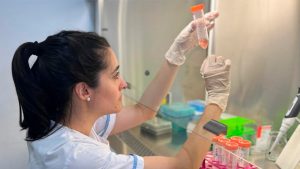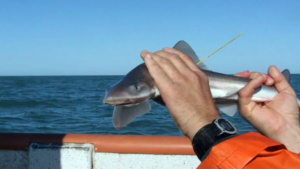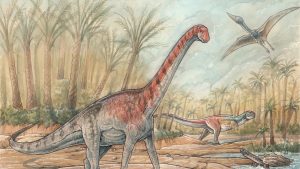Effects on phytoplankton revealed due to the increase in temperature in Antarctica
An international team led by researchers from Argentina observed the drastic changes that occur in the phytoplankton of Antarctica due to a heat wave lasting only a few days. These microorganisms produce more than 50 percent of the planet´s oxygen and are the base of the food web of marine ecosystems.
Emanuel Pujol (CTyS-UNLaM Agency) - A decade ago, it was predicted that by 2050 there could be heat waves in Antarctica and temperature increases of the order of four degrees. However, these changes are occurring much faster than expected, according to the researchers who participate in the campaigns of the Argentine Antarctic Institute (IAA for its acronym in Spanish).
Biologist Julieta Antoni, a doctoral fellow from CONICET and the University of La Plata, indicated: “From samples t aken in Caleta Potter -a bay located north of the Antarctic Peninsula-, we analyse marine phytoplankton, which are microorganisms that they are the base of the food web and, in addition, they are excellent oxygen producers, as are trees on a land level”.
“Planet Earth shows a sustained increase in air temperature and, therefore, in water temperature. In Antarctica, in addition, due to the increase glacial melt associated with this increase in temperature, a greater quantity of fresh water is discharged into these sea bays that have salty waters. So we are studying what happens to phytoplankton if these conditions of high temperatures and low salinity occur”, explained Antoni, lead author of the study recently published in the Journal of Experimental Marine Biology and Ecology.
Dr. Irene Schloss, researcher at the Argentine Antarctic Institute and the Austral Center for Scientific Research (CADIC-CONICET), detailed to the CTyS-UNLaM Agency that “since approximately 2010, we are doing experiments in Antarctica simulating what would happen with plankton if it were exposed to higher temperature conditions, which at the same time produces the melting of glaciers and a massive supply of fresh water”.
"The values that we are using in these experiments are those that were predicted to be achieved in the next 50 years, but unfortunately last season showed us water temperatures that were already at such high values, so it is not good news for the environment”, indicated specialist Schloss, director of the Plankton Project at the Carlini base of the IAA.
Meanwhile, Antoni commented that “it is estimated that between 50 and 60 percent of the planet's oxygen is generated by these small microorganisms and, as we observed in this study of the phytoplankton of Caleta Potter, with an increase in temperature during seven days, already alterations are generated in the composition of these communities”.
The different species of plankton can be distinguished under the microscope based on their shape and pigmentation: “There was a typically subantarctic species of phytoplankton that grew much larger than the rest, a species that had not been recorded in Antarctica before. And, in addition, a species of algae that is cosmopolitan also grew. Both are from climates a little warmer or with higher temperatures than those recorded in Antarctica”, explained the CONICET doctoral fellow.
In turn, with the decrease in salinity, very small species of algae proliferated, which belong to “nanoplanktonic” groups. The problem is that this would not only imply a change in the structure of the phytoplankton, but it would also affect the different trophic webs; one of the main consumers of this phytoplankton is krill, which in turn is consumed by a wide variety of animals in the Antarctic ecosystem.
A simulation of a very present future
The study published in the Journal of Experimental Marine Biology and Ecology under the name "Response of a natural Antarctic phytoplankton assemblage to changes in temperature and salinity" is based on the increase in temperature and the decrease in salinity in samples taken in Potter Cove in the year 2016. But the worrying thing is that, in the summer campaign of 2020, the temperatures of reality were similar to those of that simulation.
“These experiments are of short duration, they last approximately a week and, in this case, what we are simulating is a very intense heat wave that is maintained in the area for a short period of time and the effects that this produces on metabolism phytoplankton and the impact on the ecosystem in general”, commented Schloss.
The IAA and CADIC-CONICET researcher added that “it is also described that heat waves will be more frequent in the coming years. And, in 2020, we had maximum temperatures in the area of the Argentine base Esperanza, north of the Antarctic Peninsula, so we are working on simulations with quite realistic values”.
In this regard, the biologist Antoni stated: “We were able to observe that the structure of the phytoplankton in Caleta Potter is changing as a result of these increases in the temperature of the water and this can not only generate consequences in the production of oxygen, but also at the level of the trophic web, since phytoplankton consuming animals are affected, as is the case of krill”.
In the Carlini scientific base, in the last ten years, more precisely in the 2011, 2014 and 2016 campaigns, three experiments were carried out with microcosm - a kind of tanks with a capacity for many liters of water that contain these small microorganisms-, to see what happened to these increases in temperature and decrease in salinity.
In the summer 2020 campaign, a new experiment of this type was also done. And, although the research from this last sample has not yet concluded, at first it was observed that in that hot summer, the phytoplankton community was represented by very small organisms, according to what was expected from the experiments carried out in previous years.
All these projects, experiments and field samples were possible from the campaigns of the Argentine Antarctic Institute under the National Antarctic Directorate (DNA for its acronym in Spanish).
Also participated in this research published in the Journal of Experimental Marine Biology and Ecology were Dr. Gastón Almandoz from CONICET, Dr. Martha Ferrario from UNLP and CONICET, Dr. Marcelo Hernando from the National Atomic Energy Commission, Dr. Diana Varela from the Department of Biology at the University of Victoria, specialists Patrick Rozema and Anita Buma from the Department of Oceanic Ecosystems at the University of Groningen and Dr. Flavio Paparazzo from CESIMAR-CONICET and the Instituto Patagónico del Mar.



